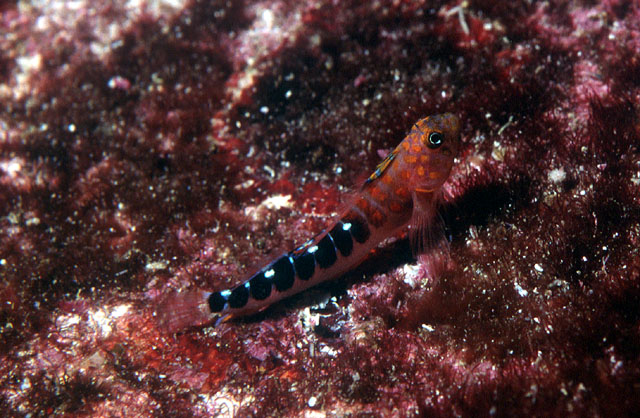| Tripterygiidae (Triplefin blennies), subfamily: Tripterygiinae |
| 3.6 cm SL (male/unsexed) |
|
demersal; marine; depth range 0 - 40 m |
| Southwest Pacific: New Zealand. |
|
Dorsal spines (total): 21-23; Dorsal soft rays (total): 10-13; Anal spines: 1-1; Anal soft rays: 23-25. Head mauve with bright orange patches. Eyes with a fine bright blue line around pupils. Body with 9-10 orange to blackish dorsal bands on the posterior half. Distinguished from other triplefins by the distinctive color pattern. Pelvic fins reduced to 2 rays. |
| Adults occur in tidal pools and the subtidal zone, usually on encrusted walls and other overhangs. They remove parasites from large fishes such as moray eels (Ref. 13227). Eggs are hemispherical and covered with numerous sticky threads that anchor them in the algae on the nesting sites (Ref. 240). Larvae are planktonic which occur primarily in shallow, nearshore waters (Ref. 94114). |
|
Least Concern (LC); Date assessed: 06 May 2010 Ref. (130435)
|
| harmless |
Source and more info: www.fishbase.org. For personal, classroom, and other internal use only. Not for publication.
